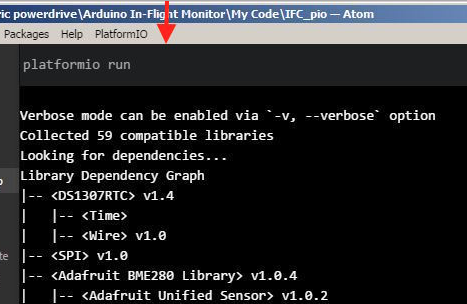Dear PlatformIO User!
We have been silent for a while, not because we haven’t been working around the clock, but we’ve had to address some important architectural changes to whole PlatformIO ecosystem. We’ve been working hard to ensure that migration from PlatformIO 2.0 to PlatformIO 3.0 passes without significant issues.
What is new
- PlatformIO Plus: Professional solutions for an awesome open source PlatformIO ecosystem (see PlatformIO story below)
- Decentralized architecture for development platforms
- Library Manager 3.0 and Intelligent Build System
- Automatic Library Dependency Finder
- Updated Library Registry with support for 3-rd party manifests (Arduino
library.json, ARM mbedmodule.json). Now, we track more than 1000 embedded libraries! - Search by header files (
#include). Useheader:filter in Library Registry or--headeroption for platformio lib search command. - Local and Embedded Unit Testing
-
47 closed issues and 300 commits to PlatformIO open source repository (please, give us a star
 )
) - Dozens of new features and improvements
See PlatformIO 3.0 Release Notes for details.
P.S: We created for you Migration guide from PlatformIO 2.x to PlatformIO 3.0.
Upgrade to PlatformIO 3.0
-
PlatformIO IDE: Please click on
Menu: PlatformIO > Upgrade PlatformIO. -
PlatformIO CLI: Please run
platformio upgradecommand.
PlatformIO Story
PlatformIO has been introduced for embedded community 2 years ago as a hobby project. It supported 3 development platforms, 2 frameworks, and a few embedded boards. We added new functionality, new platforms, boards with each new release. In February 2016, we met with a problem (success?) related to a big interest for PlatformIO (see URGENT: The further fate of PlatformIO Project… Part II). In that time, we worked on PlatformIO in free time and didn’t have a full-time team.
Team
We have found a small full-time team and tried finding ways how to support it. We contacted with multiple vendors and companies related to embedded to help us keeping PlatformIO open source, free and alive. This period (6 months, Feb-Aug) was complicated for us. We didn’t find a comfortable way how to keep PlatformIO FREE and INDEPENDENT. These 2 words don’t work in pair. Then, we decided to open a donation wallet and asked our community to support this project. We have a small banner in PlatformIO IDE and link on the main site. As a result, donation form also does not work today.
Business
Thousands companies and developers use PlatformIO every day. Someone uses it for hobby-project, someone teaches with PlatformIO how to make first steps into embedded world, and others create awesome things using PlatformIO and make business on it. The big our mistake is that we have done a lot of features and services totally for free because we love the open source and believe in its power. We understand that our main mission is to reduce input threshold to the Embedded World with creating high-level instruments and services.
Now, we understand that the only single way out of the situation is to create own professional solutions for the business based on PlatformIO. It will allow us to keep active development of PlatformIO Open Source and propose for embedded world new professional standards and awesome instruments for IoT development.
PlatformIO Plus
We are proud to present our first independent and business project with professional solutions. Today, PlatformIO Plus is a core sponsor of PlatformIO Open Source Project.
Please support us and make an own investment into free and open source PlatformIO ecosystem!
Regards,
PlatformIO Plus Team

 Very smart system
Very smart system 